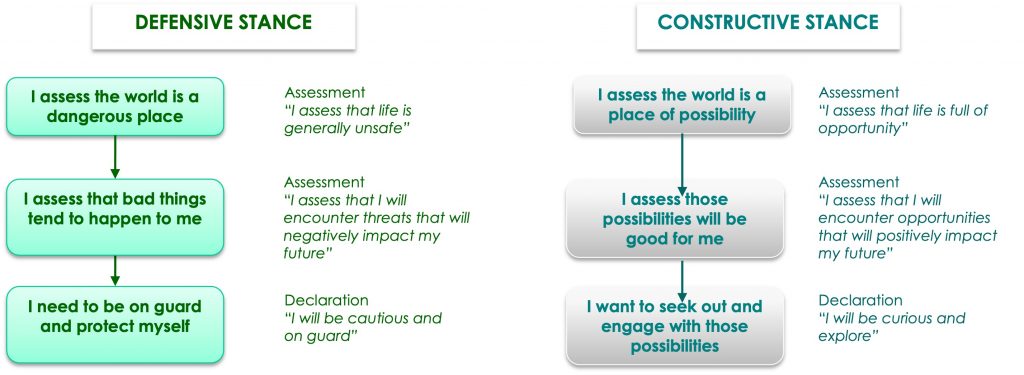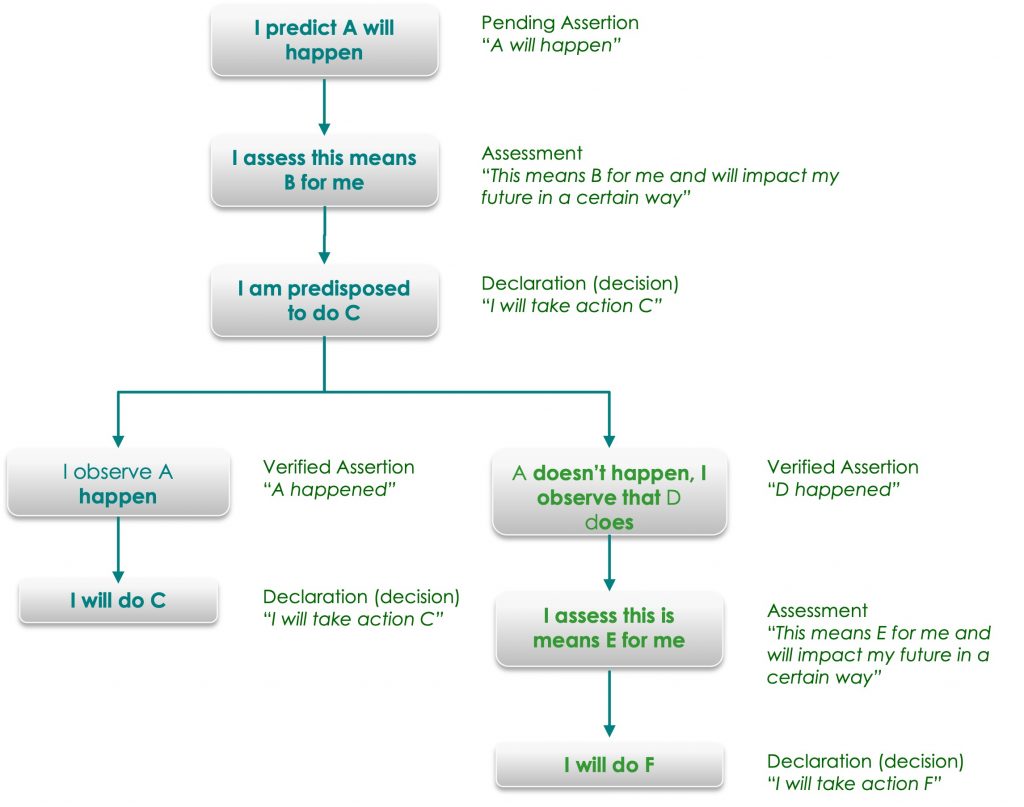
Our moods stem from our habitual physical experiences of affect (valence and arousal) and we can make them more meaningful through refined language-based distinctions. By more effectively reconstructing our moods in language, we can better understand our habitual predispositions and seek to generate habits that serve us better in life and create our preferred emotional states.
Linguistic Reconstruction of Moods

Our moods stem from our habitual physical experiences of affect (valence and arousal) and we can make them more meaningful through refined language-based distinctions. By more effectively reconstructing our moods in language, we can better understand our habitual predispositions and seek to generate habits that serve us better in life and create our preferred emotional states.
In reconstructing moods, there is no immediate event to initiate the reconstruction. Instead, we start from an attitude or stance in the form of a basic assessment we have at that time. When looking at the basic moods identified with this work, this is either a defensive stance or a constructive one.
Defensive moods such as resentment, anxiety and resignation begin with a fundamental assessment of the world as a dangerous place with many potential threats. For example, the following set of assessments linguistically reconstructs a mood of anxiety:
“I assess the world as a dangerous place.”
“I assess I may not be able to deal with those dangers and, as a result, I may be harmed or lose someone or something that matters to me.”
“I assess these threats will continue regardless of my actions.”
“I declare I will be cautious and on guard.”
Constructive moods such as acceptance, curiosity and ambition begin with a fundamental assessment of the world as a dangerous place with many potential threats. For example, the following set of assessments linguistically reconstructs a mood of curiosity:
“I assess the world as full of uncertainty.”
“I assess I will be able to deal with that uncertainty and this will open up new possibilities”
“I assess some of these possibilities may lead to opportunities to enhance my life.”
“I declare I will be open to those possibilities and explore them.”
The assessments defined in the reconstruction of a mood present as an underlying story that might be held, providing a context for how someone might observe the world and engage in living.
Linguistic Reconstruction of Emotions

Emotions are related to a situation. Therefore when reconstructing an emotion we begin with an assertion that something happened and then develop the associated assessments.
The basis components when reconstructing an emotion are:
- An assertion of an event; and
- An assessment as to the impact of this event on our space of possibilities.
Here are a few examples:
Sadness
- “I assert that X has happened.”
- “I assess that X is a loss for me.”
- “I assess that X has reduced my space of possibilities.”
Shame
- “I assert that I did (or did not do) X (or X happened, or did not happen to me).”
- “I assess that I should not have (or should have) done this (or that it should not have happened, or it should have happened, to me).”
- “I assess that this breaks the standards of my community.”
- “I assess that this adversely affects my public identity and diminishes my space of possibilities.”
Happiness
- “I assert that X has happened.”
- “I assess that X is wonderful.”
- “I assess that X has expanded my space of possibilities.”
These are by no means the only way in which these emotions can be reconstructed. However, as you can see, each one begins with my observation of a situation and is followed by my assessments of the impact of that situation on my space of possibilities.
In some instances, when we recognise the impact of an emotional space, we also can recognise that there is an associated breakdown to be addressed. Accordingly, we may also decide to make a declaration to move to a new emotional space or remain in our existing one. For example, for sadness we might declare, “To move forward, I declare that I accept that loss as a fact of life”. For shame we might declare, “To move forward, I declare that I will face my community’s judgement and repair any damage.”